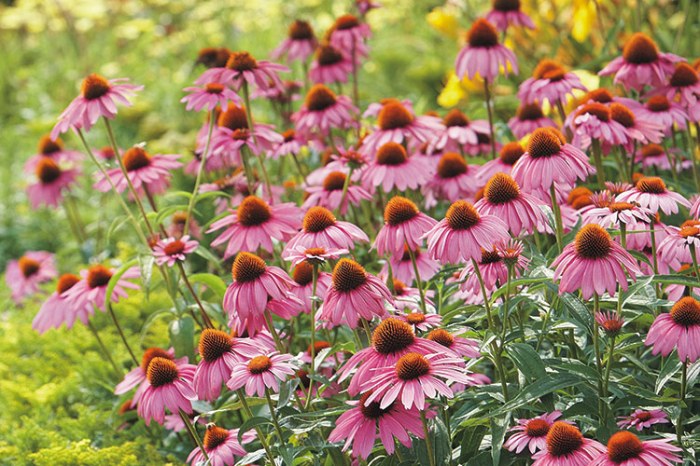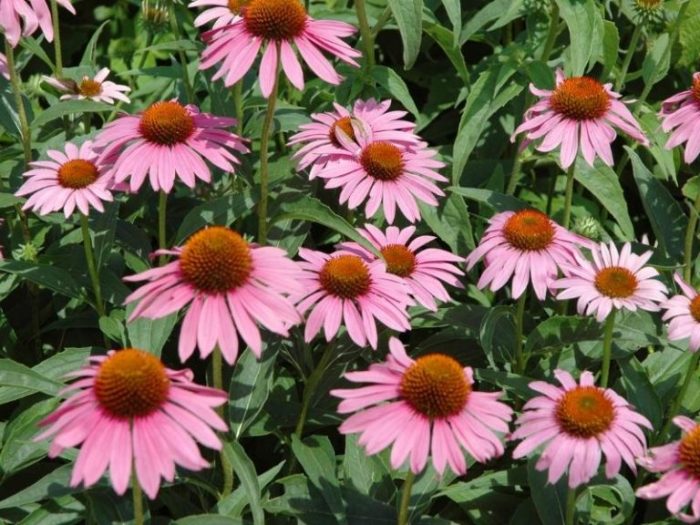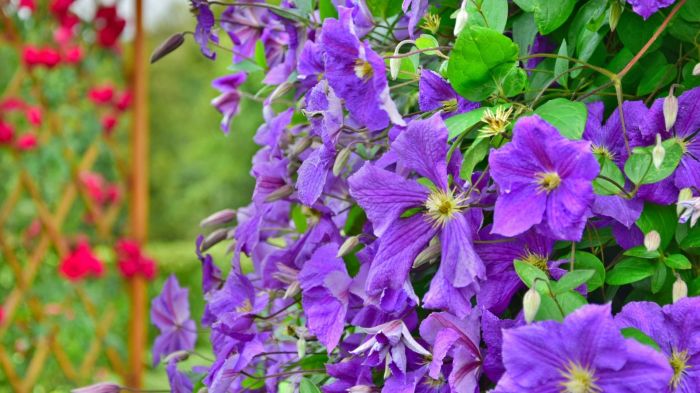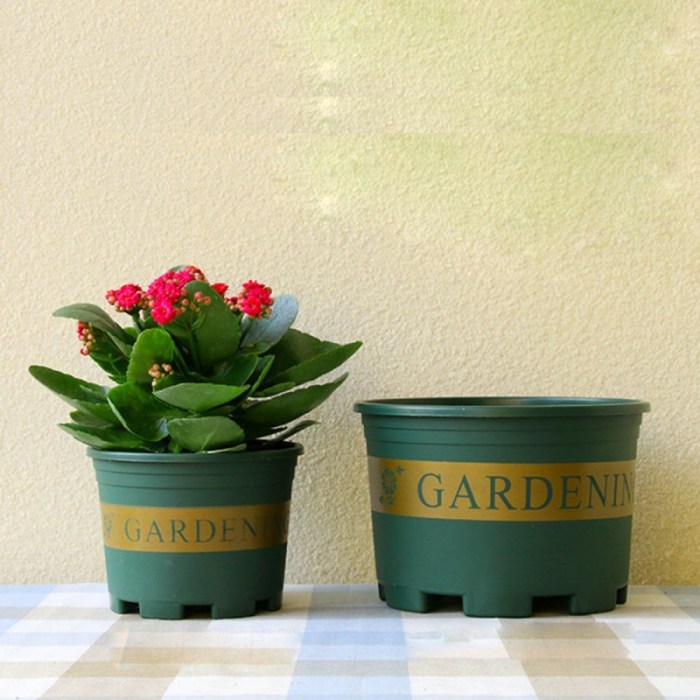Coneflower Planting Zones

Cone flowers when to plant – Coneflowers, with their cheerful daisy-like blooms, are a gardener’s delight. But to ensure these beauties thrive, understanding their ideal growing conditions is key. Proper planting zone selection plays a crucial role in determining the success of your coneflower garden, impacting everything from establishment to flowering. Let’s delve into the specifics of planting zones and their impact on coneflower growth.
Coneflowers are generally hardy and adaptable, but their optimal growth depends heavily on the USDA Plant Hardiness Zone. This system divides North America into zones based on average annual minimum winter temperatures, providing a valuable guide for gardeners to choose plants suitable for their local climate. A map illustrating these zones would show a gradient of colors, each representing a specific temperature range, with zones generally increasing in number from north to south, indicating warmer temperatures.
The warmer the zone, the milder the winters.
Coneflower Hardiness Zones and Growth Factors
Coneflowers, depending on the specific variety, typically thrive in USDA Plant Hardiness Zones 3 through 9. This broad range reflects the adaptability of different coneflower species. Within these zones, several factors influence coneflower growth. Temperature plays a vital role; while coneflowers tolerate some frost, extremely harsh winters in zones below 3 might damage or kill them. Conversely, excessively hot summers in zones above 9 can stress the plants, leading to reduced flowering and potential wilting.
Sunlight is another crucial factor; most coneflowers prefer at least six hours of direct sunlight daily to flourish. In shadier areas, flowering might be reduced, and the plants may become leggy. Well-drained soil is also essential to prevent root rot, a common issue for coneflowers in poorly drained conditions.
Optimal Planting Times for Coneflower Varieties
Choosing the right planting time is crucial for coneflower success. The optimal time depends on both the specific coneflower variety and your planting zone. Spring planting allows the plants to establish strong root systems before the heat of summer, while fall planting gives them a head start in the spring. However, fall planting needs to be timed so the plants have enough time to root before the ground freezes.
| Zone | Variety | Spring Planting Time | Fall Planting Time |
|---|---|---|---|
| 3-5 | Echinacea purpurea (Purple Coneflower) | After last frost | 6-8 weeks before first frost |
| 6-7 | Echinacea pallida (Pale Purple Coneflower) | After last frost | September-October |
| 8-9 | Echinacea paradoxa (Yellow Coneflower) | Spring (March-May) | October-November |
Seed Starting vs. Transplanting
Choosing between starting coneflowers from seed or transplanting established seedlings depends on your gardening experience, available resources, and desired timeline. Both methods offer advantages and disadvantages, and understanding these differences will help you make an informed decision for a thriving coneflower patch. Seed starting provides a wider selection of varieties and can be more cost-effective in the long run, while transplanting offers a faster route to blooming plants.Starting coneflowers from seed requires patience but allows for greater control over the growing process.
Transplanting, on the other hand, offers a quicker path to mature plants, but requires careful handling and site preparation. Let’s delve into the specifics of each method.
Starting Coneflowers from Seed
Successfully germinating coneflower seeds requires attention to detail, but the rewards of nurturing these plants from tiny seeds to robust blooms are immense. The process, while not overly complicated, does require patience and consistent care.
Here’s a step-by-step guide to starting coneflowers from seed:
- Seed Preparation: Coneflower seeds benefit from a period of cold stratification. This mimics the natural conditions they experience in the wild and improves germination rates. Mix the seeds with slightly dampened vermiculite or peat moss and place them in a sealed container in the refrigerator for 4-6 weeks.
- Sowing: Sow the stratified seeds in seed starting mix, about ¼ inch deep, in small pots or a seed tray. Keep the soil consistently moist but not soggy. Maintain a temperature around 70-75°F (21-24°C).
- Seedling Care: Once seedlings emerge, provide them with plenty of sunlight (at least 6 hours daily) and ensure consistent moisture. Thin out seedlings to give each plant enough space to grow. Avoid overwatering, which can lead to damping-off disease. When the seedlings develop their second set of true leaves, they can be transplanted into larger containers.
Transplanting Coneflowers
Transplanting established coneflower seedlings or purchased plants is a faster way to enjoy blooms in your garden. However, it’s crucial to handle the plants gently to minimize transplant shock. Careful site preparation and post-transplant care are also essential for successful establishment.
Here’s what you need to know about transplanting coneflowers:
- Selecting Healthy Plants: Choose plants that are free from diseases or pests, with robust root systems and healthy foliage. Avoid plants that show signs of stress, such as wilting or yellowing leaves.
- Preparing the Planting Site: Select a location that receives at least 6 hours of sunlight per day. Amend the soil with compost or other organic matter to improve drainage and fertility. Dig holes slightly larger than the root balls of the coneflowers.
- Post-Transplant Care: Gently remove the coneflowers from their containers, being careful not to damage the roots. Plant them at the same depth they were growing in their containers. Water thoroughly after planting and provide regular watering, especially during dry periods. Mulching around the plants helps retain moisture and suppress weeds.
Optimal Planting Times by Season: Cone Flowers When To Plant

Coneflowers, with their cheerful daisy-like blooms, are a gardener’s delight. Choosing the right planting time significantly impacts their success and overall vibrancy. Spring and fall offer distinct advantages and disadvantages, influencing how you approach soil preparation, plant spacing, and winter protection.Spring and fall planting each present unique opportunities for successful coneflower cultivation. Spring planting allows for quicker establishment and a potentially earlier bloom, while fall planting offers the benefit of cooler temperatures and improved root development before the summer heat.
However, each season presents challenges; spring planting might mean dealing with unpredictable weather, while fall planting necessitates careful consideration of frost protection to ensure the plants survive the winter.
Spring Planting of Coneflowers
Spring planting, typically undertaken after the last frost, offers a head start for coneflowers. The warmer temperatures promote faster germination and growth, often resulting in blooms appearing earlier in the season. However, the unpredictable nature of spring weather, including late frosts and periods of drought, can hinder the establishment of young plants. Proper soil preparation and consistent watering are key to successful spring planting.Before planting, prepare the soil by loosening it to a depth of about 12 inches.
This allows for better root penetration and drainage. Incorporate compost or other organic matter to improve soil fertility and drainage. Space the coneflower plants approximately 12-24 inches apart, depending on the mature size of the cultivar. This spacing allows for adequate air circulation and prevents overcrowding, reducing the risk of fungal diseases. Water regularly, especially during dry spells, ensuring the soil remains consistently moist but not waterlogged.
Consistent watering, especially during establishment, is crucial for successful spring planting.
Fall Planting of Coneflowers
Fall planting, usually done six to eight weeks before the first expected frost, provides several advantages. Cooler temperatures and increased soil moisture create ideal conditions for root development. The plants establish a strong root system during the fall and winter, enabling them to thrive when spring arrives. However, fall planting requires careful consideration of frost protection to prevent winter damage.
Yo, so you wanna plant some cone flowers? Best time is spring or fall, bro. If you’re vibin’ that daisy look, check out this site for some inspo on plant daisy like flowers – they’re pretty rad. Then, get back to planting those cone flowers, make sure the soil’s right, and you’re good to go!
In regions with harsh winters, providing adequate mulch or other protective measures is essential.Proper soil preparation remains crucial for fall planting. Amend the soil with compost or other organic matter to improve drainage and fertility. Space the plants according to the cultivar’s mature size, typically 12-24 inches apart. Water thoroughly after planting to help the roots settle.
Once the ground freezes, apply a layer of mulch (such as straw or shredded leaves) around the base of the plants to insulate them from freezing temperatures. This mulch layer helps regulate soil temperature and moisture, protecting the roots from extreme cold and preventing winter desiccation. A layer of approximately 3-4 inches of mulch should suffice for most regions.
The mulch should be removed in early spring to prevent fungal diseases and allow for optimal plant growth.
Coneflower Varieties and Planting Needs

Coneflowers, with their cheerful daisy-like blooms, are a gardener’s delight. Their versatility extends beyond just their striking appearance; different varieties offer a range of bloom times, colors, and heights, allowing for creative garden design and extended periods of vibrant color. Understanding the specific needs of each variety ensures successful cultivation and a thriving display.
Coneflower Variety Characteristics
Choosing the right coneflower depends on your garden’s conditions and your aesthetic preferences. The following table highlights some popular varieties, their bloom times, sunlight needs, and soil preferences. Remember that these are general guidelines, and specific conditions may vary slightly depending on your climate and local environment.
| Variety | Bloom Time | Sunlight Needs | Soil Preference |
|---|---|---|---|
| Echinacea purpurea (Purple Coneflower) | Late Spring to Early Fall | Full sun to partial shade | Well-drained, average soil |
| Echinacea paradoxa (Yellow Coneflower) | Summer | Full sun | Well-drained soil |
| Echinacea pallida (Pale Purple Coneflower) | Summer | Full sun | Well-drained, dry to medium soil |
| ‘Magnus’ (Purple Coneflower cultivar) | Summer | Full sun | Well-drained soil |
| ‘Kim’s Knee High’ (Dwarf Coneflower) | Summer | Full sun | Well-drained soil |
Selecting Coneflower Varieties
Selecting appropriate coneflower varieties involves considering desired bloom time, color, and height. For instance, if you desire continuous blooms throughout the summer, choose a mix of varieties with staggered bloom times. If you have a small garden space, dwarf cultivars like ‘Kim’s Knee High’ are ideal. Conversely, taller varieties, such as Echinacea purpurea ‘Magnus’, are perfect for creating a dramatic backdrop in a larger garden bed.
A variety of colors, from the classic purple of Echinacea purpurea to the sunny yellow of Echinacea paradoxa, allows for customized color schemes.
Coneflower Companion Plants
Companion planting enhances the beauty and health of your coneflower garden. Strategic choices can improve soil health, attract beneficial insects, and create a visually appealing and ecologically balanced space.
Examples of companion plants that thrive alongside coneflowers include:
- Lavender: Its fragrant blooms complement coneflowers and attract pollinators.
- Salvia: The tall spires of salvia provide a contrasting texture and attract hummingbirds, who also pollinate coneflowers.
- Russian Sage: This drought-tolerant plant adds silvery foliage and late-season blooms to the garden.
- Black-eyed Susans: These cheerful yellow daisies provide a vibrant contrast and extend the blooming season.
Post-Planting Care and Maintenance
Coneflowers, once established, are relatively low-maintenance plants, but proper care ensures vibrant blooms and healthy growth. Consistent attention to watering, fertilization, and pest control will reward you with a stunning display year after year. Neglecting these aspects, however, can lead to stunted growth, fewer flowers, and susceptibility to diseases.
Watering Requirements
Adequate watering is crucial, especially during the establishment phase and in periods of drought. Young coneflowers need consistent moisture to develop strong root systems. Overwatering, however, can lead to root rot. Aim for consistently moist but not soggy soil. Water deeply and less frequently, allowing the top inch of soil to dry out between waterings.
Established plants are more drought-tolerant but will benefit from supplemental watering during extended dry spells. Mulching around the base of the plants helps retain soil moisture and suppress weeds.
Fertilizing Coneflowers
Coneflowers are not heavy feeders and generally don’t require frequent fertilization. Over-fertilizing can lead to excessive foliage at the expense of blooms. A light application of a balanced, slow-release fertilizer in early spring is usually sufficient. Avoid high-nitrogen fertilizers, as these promote leaf growth rather than flower production. Observe your plants; if they appear healthy and produce abundant blooms, supplemental fertilization is likely unnecessary.
Deadheading Coneflowers
Deadheading, the removal of spent flowers, encourages continuous blooming throughout the growing season and prevents the plant from expending energy on seed production. Simply snip off the faded flower heads just below the spent bloom, leaving the stem intact. Regular deadheading will result in a longer and more prolific flowering period. Leaving some seed heads on the plant can provide food for birds and other wildlife during the winter months, if desired.
Coneflower Pests and Diseases, Cone flowers when to plant
Coneflowers are relatively resistant to pests and diseases, but they can occasionally be affected by certain issues. Common pests include aphids, spider mites, and Japanese beetles. These can usually be controlled with insecticidal soap or neem oil. Powdery mildew is a fungal disease that can occur in humid conditions. Good air circulation and avoiding overhead watering can help prevent this.
Severely affected plants may require treatment with a fungicide. Regular inspection for pests and diseases is crucial for early detection and prompt treatment.
Coneflower Growth Stages
Imagine a coneflower’s life cycle visually. First, you see a small seedling emerging from the soil, its two cotyledons (seed leaves) unfurling. The seedling gradually develops true leaves, forming a small rosette close to the ground. As it matures, a central stem begins to grow taller, producing more leaves. Buds then appear at the stem tips, gradually swelling and developing color.
The buds open into the characteristic daisy-like coneflower blooms. The flowers remain open for several weeks, eventually fading and producing seeds. The plant may then enter a period of dormancy before re-emerging the following year, assuming it’s a perennial variety. Throughout this process, the root system continues to grow and expand, providing a strong foundation for the plant.
Commonly Asked Questions
Can I plant coneflowers in containers?
Absolutely! Coneflowers can thrive in containers, especially dwarf varieties. Just ensure the container has adequate drainage and enough space for root growth.
How long do coneflowers bloom?
Most coneflowers bloom for several weeks, often from early summer to fall. Deadheading spent blooms can encourage more blooms.
Do coneflowers need much watering?
Once established, coneflowers are relatively drought-tolerant. Water deeply but infrequently, especially during dry spells.
What to do if my coneflowers get powdery mildew?
Powdery mildew is common. Improve air circulation by spacing plants appropriately and consider using a fungicide if necessary.



